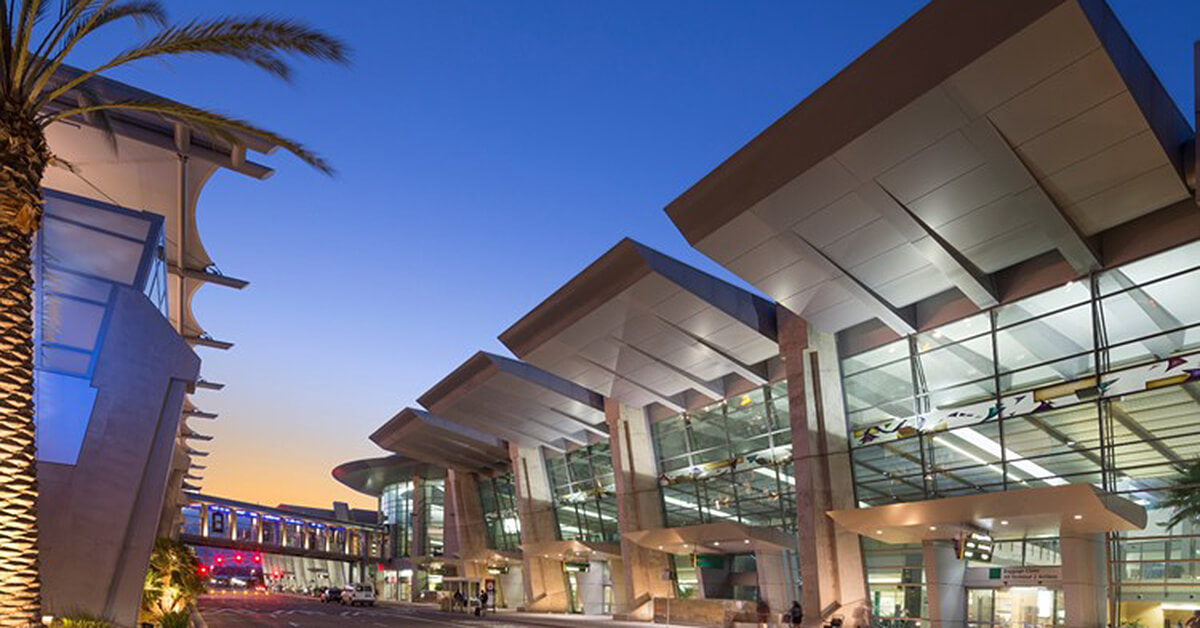
Sept. 22, 2020
The FAA recently awarded San Diego International Airport (SAN) with an $18 million grant for its initiative for residential sound insulation – the Quieter Home Program. This is the largest annual amount given to an airport for the effort to mitigate aircraft noise.
The grant will also allow – for the first time – the insulation of non-residential structures such as schools and churches. The program has already retrofitted about 4,300 homes, and the latest funding will go toward sound insulating another 200-400 buildings a year.
SAN, with its single runway and downtown location, has long been considered a unique airport to fly into. When adding in numerous noise-sensitive nearby neighborhoods, a nighttime curfew and scant flexibility for routing changes, SAN is left with a recipe for challenges that extend beyond the airport perimeter and go back decades in time.
“The community has been working with airport stakeholders on noise concerns for about 40 years,” said Sjohnna Knack, program manager, airport planning and environmental affairs (aircraft noise) at SAN. “Development was already built up close to the airport years ago, and because we are a downtown airport with little control over flight paths, noise has been a long discussion.” Flight constraints at the airport include nearby mountains, the Pacific Ocean and the Mexican border – not to mention downtown high-rises.
“Decades of successful efforts on the ground can be jeopardized by just a few aircraft not following the noise abatement procedures in the air,” said Knack, reminding business aircraft pilots to fully fly the departure procedures, avoid early turns and to be mindful in requesting shortcuts from ATC that would take them over noise sensitive areas.
Pilots should also be aware that reduced traffic levels caused by the pandemic and larger number of people working from home have resulted in heightened sensitivity to noise. “Our noise complaint numbers have not reduced proportionally to the drop-in operations,” she said.
Phil Derner, NBAA’s Western regional representative, said Knack and her colleagues are to be commended for their efforts at leading an active 18-member Airport Noise Advisory Committee (ANAC), which includes 11 members of the community, NBAA, the airlines, the FAA and others, and is strongly committed to working with all stakeholders to ensure the best outcomes for all.
“As a fellow member of the community themselves, the airport recognizes the importance of a two-way dialogue that allows citizens to understand and harness the value that airports bring in terms of jobs, economic impact and access to safe, global transportation,” noted Derner.
SAN has conducted CFR 14 Part 150 Airport Noise Compatibility Planning studies in the past and is currently undergoing one now. Knack insists on having all stakeholders participate, “We can only be successful if everyone sits at the table,” she said. “We have productive conversations and talk about potential solutions.”
NBAA member Dave Ryan, director of flight operations for a West Coast Part 91 flight department, also participates in the ANAC and Part 150 meetings on behalf of business aviation, which makes up only about 9% of the operations at SAN.
“I have been impressed with the professionalism and technical expertise of the airport staff,” said Ryan. “They field a lot of noise complaints and are passionate about trying to work out solutions.”
NBAA’s Derner said Ryan is “a valuable voice” as a representative of business aviation on the airport committees. Ryan encourages other NBAA members to get involved at their airports as well.


 International Business Aviation Council Ltd.
International Business Aviation Council Ltd.